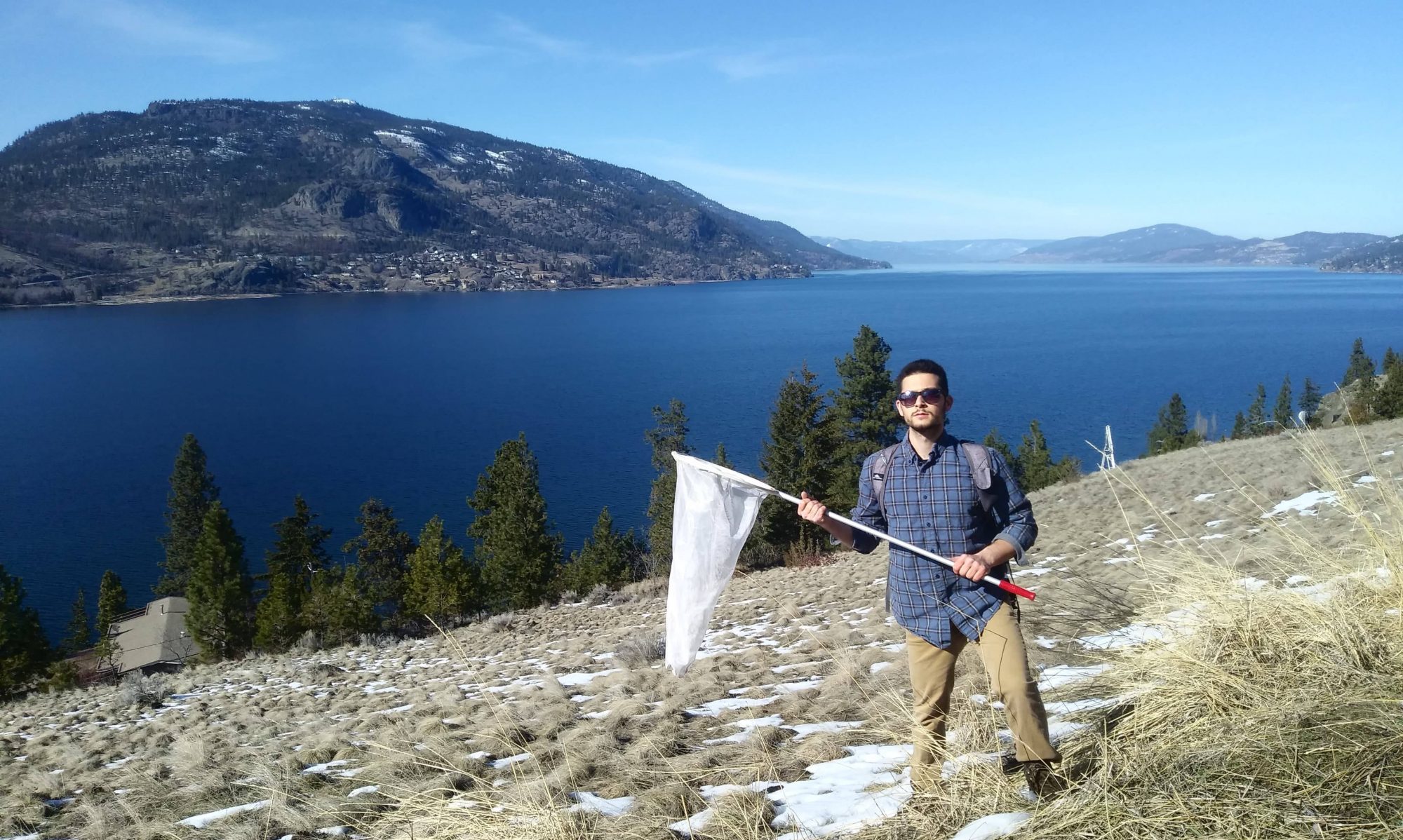Although I have a wide range of interests when it comes to the field of environmental research, my work thus far has focused on habitat fragmentation as a result of human development. Specifically, I have taken two different approaches to the effects of fragmentation on wildlife populations in the two main projects that I have worked on.
Fragmentation Due to Human Corridors
In the first major study I completed, my honours thesis, I examined the issue of habitat fragmentation as it relates to road-based impacts along the Trans-Canada Highway.
One of the most common study areas of road-based impacts on park wildlife is along the Trans-Canada Highway (TCH). The section of this highway running through the Bow River Valley serves as a critical access point to the national parks of the Rockies, which host several large mammal species (Lee et al., 2012). Expansion of this highway has worsened its impact on park wildlife, leading to mortality for species with mass movements between habitats (Clevenger, 2013; Pagnucco et al., 2012), and acting as a major impediment to animal movement, especially for herbivorous species that often find areas of attractive grazing along the edges of the TCH (Beyer et al., 2014; Edwards, 2013). Perhaps the most common source of mortality as a result of this transport corridor is through wildlife-vehicle collisions (WVC), which pose additional threats to humans (Ford et al., 2009; Gunson, et al., 2009).
In response to increased mortality, various mitigation strategies have been undertaken to reduce the number of WVCs and allow for increased movement of wildlife, including the installation of fencing, one-way gates for animals, underpasses and overpasses (Ford et al., 2009; Lee et al., 2012; Sawaya et al., 2014).

An animal passes through an underpass along the Trans-Canada Highway
My approach for this project was heavily focused on the presence of wildlife corridors (overpass and underpass structures) present along the highway to reduce the impacts of this fragmentation on wildlife, in this case the wildlife crossing structures (both underpass and overpass structures) along the highway and surrounding areas. More specifically, it focused on the monitoring strategies used to observe animals using the structures, which can provide effective information regarding the movement and behavioural patterns of various species as they relate to the corridors.
Fragmentation in an Urban Setting
My current project that I am working on as part of my MSc will attempt to examine how habitat fragmentation within an urban landscape in the Okanagan affects native bee species.
The potential effects of urbanization on bees include habitat fragmentation, reduced nesting site availability, decreased availability of food, and increased exposure to anthropogenic factors such as pollution or foot traffic (Hernandez et al., 2009). Although there are many threats to wild bee populations, such as climate change, pesticide use and disease, habitat loss appears to carry with it the most adverse impacts (Koh et al., 2016). Habitat loss and fragmentation in urban areas can affect rates of pollinator visitation to plants by leading to pollinator population decline, also affecting the populations and foraging dynamics of pollinators and their services by altering the composition of plant communities (Harrison and Winfree, 2015).
Fragmented green spaces within urban environments, including home and community gardens, road edges and flower beds can supply these nesting sites and resources for pollinating species in an otherwise unsuitable environment (Tommasi et al., 2004).
Focusing on urban green spaces that have the ability to provide suitable habitat for wild urban bee populations, I will examine the diversity and abundance of bees across urban gardens throughout Kelowna. This will include the observation of both the structural and functional diversity at each study site examined.

The study will be conducted throughout the city of Kelowna, BC
It is likely that any future research conducted will follow the theme of the effects of habitat fragmentation on a particular type of wildlife, as this issue is one of the largest surrounding ecological studies.
References
Beyer, H. L., Gurarie, E., Börger, L., Panzacchi, M., Basille, M., Herfindal, I., Matthiopoulos, J. (2014). “You shall not pass!”: Quantifying barrier permeability and proximity avoidance by animals. Journal of Animal Ecology, 43–53.
Clevenger, A. P. (2013). Mitigating Highways for a Ghost : Data Collection Challenges and. Northwest Science Notes, 87(3), 297–304.
Edwards, B. C. (2013). Home ranges, resource selection, and parasite diversity of urban versus rural elk. Department of Biological Sciences, University of Calgary, Alberta.
Ford, A. T., Clevenger, A. P., & Bennett, A. (2009). Comparison of Methods of Monitoring Wildlife Crossing-Structures on Highways. Journal of Wildlife Management, 73(7), 1213–1222.
Gunson, K. E., Clevenger, A. P., Ford, A. T., Bissonette, J. A., & Hardy, A. (2009). A comparison of data sets varying in spatial accuracy used to predict the occurrence of wildlife-vehicle collisions. Environmental Management, 44(2), 268–277.
Harrison, T. and Winfree, R. (2015). Urban drivers of plant-pollinator interactions. Functional Ecology 2015. 29: 879-888.
Hernandez et al. (2009). Ecology of Urban Bees: A Review of Current Knowledge and Directions for Future Study. Cities and the Environment. 2(1), article 3.
Koh, I. et al. (2016). Modeling the status, trends, and impacts of wild bee abundance in the United States. PNAS. 113(1): 140-145.
Lee, T., Clevenger, A. P., & Ament, R. J. (2012). Highway Wildlife Mitigation Opportunities for the Trans-Canada Highway in the Bow River Valley. Report to Alberta Ecotrust Foundation, Calgary, Alberta.
Pagnucco, K. S., Paszkowski, C. a., & Scrimgeour, G. J. (2012). Characterizing Movement Patterns and Spatio-temporal Use of Under-road Tunnels by Long-toed Salamanders in Waterton Lakes National Park, Canada. Copeia, 2012(2), 331–340.
Sawaya, M. a, Kalinowski, S. T., & Clevenger, A. P. (2014). Genetic connectivity for two bear species at wildlife crossing structures in Banff National Park. Proceedings. Biological Sciences / The Royal Society, 281(1780), 20131705.
Tommasi, D. et al. (2004). Bee diversity and abundance in an urban setting. The Canadian Entomologist. 136(6): 851-869.
